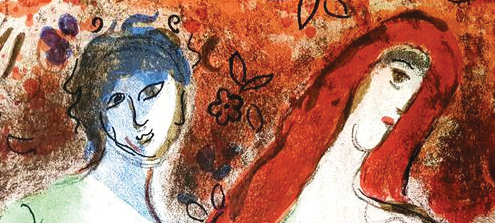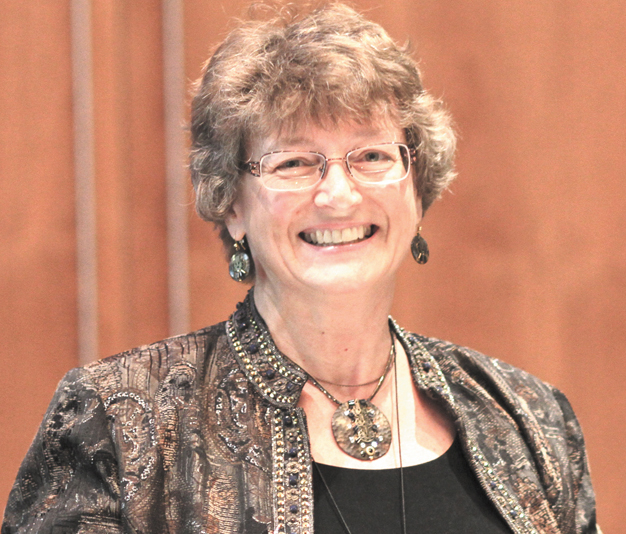Stories within stories

Considering Creation Series
Jewish Family Education with Candace R. Kwiatek, The Dayton Jewish Observer
The legendary second-century sage Rabbi Akiva grew up in the land of Israel poor, ignorant, and illiterate, eventually becoming a shepherd for a wealthy Jerusalemite. Despite his circumstances, Akiva eventually mastered the Torah, oral tradition, and mysticism.
He became the most famous scholar and sage of his era: a teacher to tens of thousands, a judge, and a significant contributor to the Mishnah and Jewish law.
But there’s another story nested within the Akiva narrative. While still a shepherd, Akiva married Rachel, who recognized his potential as a scholar. Rachel urged the 45-year-old Akiva to master the Hebrew Alphabet and boosted his self-confidence as he learned to read. She then encouraged her skeptical husband to leave home to study with scholars at the academy.
When Akiva returned 24 years later, he acknowledged, “If not for this woman, I would still be an ignorant shepherd. Whatever I know, I owe to her.”
The overlapping stories of Rachel and Akiva offer an intriguing model for understanding the two narratives of human creation.
Genesis 1: “Then God said, ‘Let us make man in our image, according to our likeness’… And God created man in His image, in the image of God He created him; male and female He created them.* God blessed them and God said to them, ‘Be fertile and increase…(1:26-28).’”
Genesis 2: “The Lord God formed man from the dust of the earth, and He blew into his nostrils the breath of life; and man became a living being… The Lord God said, ‘It is not good for man to be alone; I will make a fitting helper for him.’ And the Lord God formed out of the earth (all the animals). And the man gave names to all…but for Adam no fitting helper was found.
“So the Lord God cast a deep sleep upon the man and he slept; He took one of his ribs and closed up the flesh at that spot. And the Lord God fashioned into a woman the rib that He had taken from the man, and He brought her to the man. Then the man said, ‘This one at last is bone of my bones and flesh of my flesh. This one shall be called Woman, for from man she was taken.’ Hence a man leaves his father and mother and clings to his wife, so that they become one flesh (2:7; 18-24).”

Bible readers and scholars alike have puzzled over these differing narratives. The most well-known response is the Documentary Hypothesis, which asserts the Pentateuch is a composite of several earlier documents, each with its own author, style, and viewpoint.
But this theory fails to account for the oral storytelling quality of all ancient Near Eastern narratives in which repetition, changes in perspective, and even differing details are essential features.
It often manifests as stories within stories, recognizable even in modern tales such as The Neverending Story and Groundhog Day. Nested within the framing narrative are one or more stories that explain or add detail to the overall picture. In the words of biblical commentator Dennis Prager, “(T)here are contradictions only if one views (Genesis 2) as a ‘second creation story,’ rather than as something else entirely…a much more detailed description of the creation of the human being.”
Try reading the opening texts together, by inserting Genesis 2 into Genesis 1 at the asterisk, just prior to the final sentence of the Genesis 1 passage. Multiple nested stories are revealed that explain and enrich the overarching Creation narrative.
“Let us make man in our image…” God accomplishes this by forming man’s body, like a potter, from the dust of the earth and animating it with a divine soul from God’s breath. By setting man’s specialized creation apart from that of all other animals, and forming the human not as just a living being but one powered by a divine soul, God begins differentiating between humans and animals.
“It is not good for man to be alone…” God points out that humans are designed to be in relationships. And yet, even though “God created man in His image,” a relationship with God doesn’t fully banish loneliness. So God invites Adam to join the search for a fitting companion, but no animal can fulfill the need for connection either. The human is designed to thrive in relationships with other humans, the only cure for loneliness.
“Male and female He created them…” God designs a “fitting helper” for Adam as a female counterpart, companion, and challenger, equal but different.
The best fit would incorporate part of Adam himself, so woman is fashioned from his rib or, in more modern translations, from his side.
According to Nachmanides, the resultant pair of a single male and a single female differentiates men from males in the animal world, who mate with multiple partners. And this pair, in turn, creates a family, the basic building block of society.
By reading Genesis not as competing accounts but as stories within stories, we can unearth a far richer understanding of God, of Creation, and of the meaning of being human.
Literature to share
Bitter and Sweet by Sandra Feder. Echoing the theme of Naomi Shemer’s timeless song is this lovely story about a young girl, Hannah, who is unhappy about moving to a new city. To comfort her, Hannah’s grandmother shares a bit of Jewish wisdom, that life is filled with both the bitter and the sweet. At first, Hannah can only see the bitter, but she soon discovers that not only can you find sweetness where least expected, but you can actually make it yourself. Delightfully illustrated with inviting scenes and expressive faces, this book is an excellent preschool-to-primary selection to read and discuss.
See also the 70th anniversary recording of 12,000 Israelis singing Naomi Shemer’s song about the bitter and the sweet, Al Kol Ayleh.
Good Heart by Alan Newman. This unusual, fast-paced novel follows the interwoven multi-generational life stories of an evangelical Christian family and a Jewish family living in a small Indiana town. Their paths intersect not only in the Holocaust and Zionism, but also in friendships and celebrations, the experiences of small-town American life, and their values that lead them all to Israel. A highly-rated page-turner, Good Heart is an uplifting saga about ordinary Christians and Jews working together to repair the world.
To read the complete May 2021 Dayton Jewish Observer, click here.


